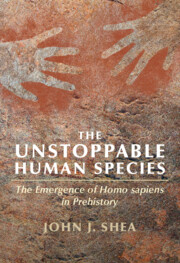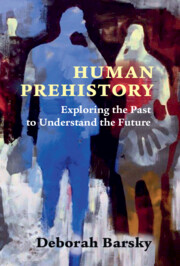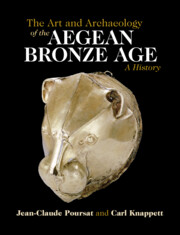80 results
Alternative icons: rethinking symbols of power in ‘The World of Stonehenge’
-
- Journal:
- Antiquity , First View
- Published online by Cambridge University Press:
- 03 June 2024, pp. 1-12
-
- Article
-
- You have access
- Open access
- HTML
- Export citation
BRUTALISED, BOUND AND BLED: A CASE OF LATER IRON AGE HUMAN SACRIFICE FROM WINTERBORNE KINGSTON, DORSET
-
- Journal:
- The Antiquaries Journal , First View
- Published online by Cambridge University Press:
- 14 May 2024, pp. 1-27
-
- Article
-
- You have access
- Open access
- HTML
- Export citation
Re-Territorializing the Neolithic: Architecture and Rhythms in Early Sedentary Societies of the Near East
-
- Journal:
- Comparative Studies in Society and History , First View
- Published online by Cambridge University Press:
- 01 April 2024, pp. 1-27
-
- Article
-
- You have access
- Open access
- HTML
- Export citation
3 - The Nile Delta before the Pharaohs
-
-
- Book:
- The Nile Delta
- Published online:
- 15 February 2024
- Print publication:
- 22 February 2024, pp 105-157
-
- Chapter
- Export citation
GEORGE FINLAY IN EGYPT AND SWITZERLAND: NINETEENTH-CENTURY TRAVEL, SCHOLARSHIP AND SOCIAL NETWORKS
-
- Journal:
- The Antiquaries Journal / Volume 103 / October 2023
- Published online by Cambridge University Press:
- 13 September 2023, pp. 363-387
- Print publication:
- October 2023
-
- Article
-
- You have access
- Open access
- HTML
- Export citation
Lost in temporal translation: a visual and visitor-based evaluation of prehistory displays
-
- Article
-
- You have access
- Open access
- HTML
- Export citation
1 - Genocide before the State?
- from Part I - Themes of Genocide through History
-
-
- Book:
- The Cambridge World History of Genocide
- Published online:
- 23 June 2023
- Print publication:
- 04 May 2023, pp 59-85
-
- Chapter
- Export citation
Introduction to Volume I
-
-
- Book:
- The Cambridge World History of Genocide
- Published online:
- 23 June 2023
- Print publication:
- 04 May 2023, pp 31-56
-
- Chapter
- Export citation

The Unstoppable Human Species
- The Emergence of Homo Sapiens in Prehistory
-
- Published online:
- 16 March 2023
- Print publication:
- 23 March 2023
Signs of prehistory. A Peircian semiotic approach to lithics
-
- Journal:
- Archaeological Dialogues / Volume 30 / Issue 1 / June 2023
- Published online by Cambridge University Press:
- 13 March 2023, pp. 31-49
-
- Article
-
- You have access
- Open access
- HTML
- Export citation
The Shaqadud Archaeological Project (Sudan): exploring prehistoric cultural adaptations in the Sahelian hinterlands
-
- Article
-
- You have access
- Open access
- HTML
- Export citation
Light Production by Ceramic Using Hunter-Gatherer-Fishers of the Circum-Baltic
-
- Journal:
- Proceedings of the Prehistoric Society / Volume 88 / December 2022
- Published online by Cambridge University Press:
- 17 November 2022, pp. 25-52
- Print publication:
- December 2022
-
- Article
-
- You have access
- Open access
- HTML
- Export citation
Introduction
-
- Book:
- Human Prehistory
- Published online:
- 20 August 2022
- Print publication:
- 18 August 2022, pp 1-4
-
- Chapter
- Export citation

Human Prehistory
- Exploring the Past to Understand the Future
-
- Published online:
- 20 August 2022
- Print publication:
- 18 August 2022
-
- Textbook
- Export citation
13 - The Role of Prehistory in Understanding the Modern Human Condition
-
- Book:
- Human Prehistory
- Published online:
- 20 August 2022
- Print publication:
- 18 August 2022, pp 198-206
-
- Chapter
- Export citation

The Art and Archaeology of the Aegean Bronze Age
- A History
-
- Published online:
- 19 May 2022
- Print publication:
- 09 June 2022
LIST OF 14C DATES OBTAINED UNDER THE PROJECT “THE DOBUŻEK SCARP MICROREGION AS A PART OF A PHYSIOLOGICAL AND BIOCULTURAL FRONTIER BETWEEN THE BALTIC AND THE PONTIC ZONE (FROM THE 6TH TO THE 2ND MILLENNIUM BC)”
-
- Journal:
- Radiocarbon / Volume 63 / Issue 5 / October 2021
- Published online by Cambridge University Press:
- 23 September 2021, pp. 1569-1573
- Print publication:
- October 2021
-
- Article
- Export citation
2 - “Status” Pursuits in Prehistory, and the Condition We Are In
- from Part I - Status Competition and Hierarchy in Human Societies
-
-
- Book:
- Consumption, Status, and Sustainability
- Published online:
- 30 July 2021
- Print publication:
- 12 August 2021, pp 33-58
-
- Chapter
- Export citation
Chapter 4 - Wild Places, Rarity and Extinction
-
- Book:
- Walter Scott and the Greening of Scotland
- Published online:
- 30 July 2021
- Print publication:
- 12 August 2021, pp 88-112
-
- Chapter
- Export citation
Early agropastoral settlement and cultural change in central Tibet in the first millennium BC: excavations at Bangga
-
- Article
-
- You have access
- Open access
- HTML
- Export citation



